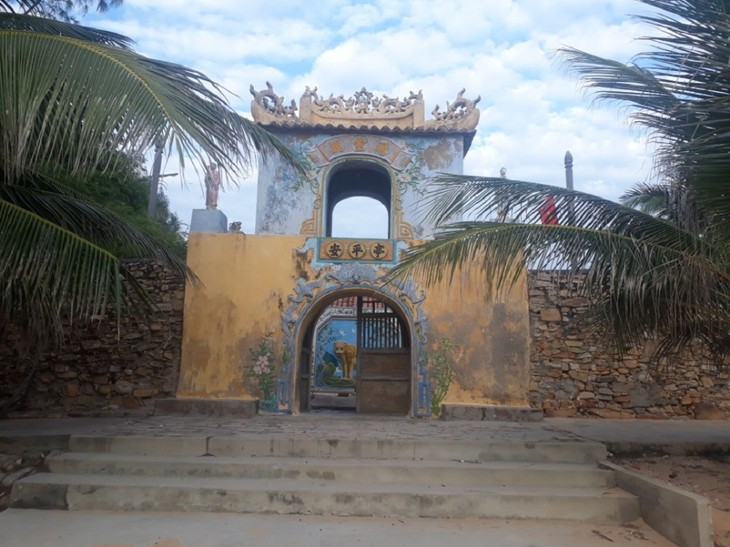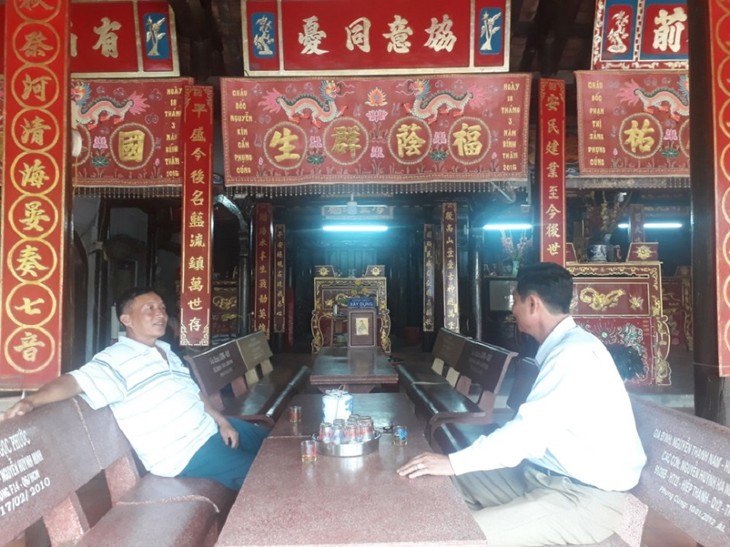(VOVWORLD) - Communal houses in Binh Thuan province embody the history of migration, land reclamation, and local cultural, and architectural development.
Binh An communal house in Binh Thanh commune, Tuy Phong district, is the oldest of all the communal houses in Binh Thuan province. Rich with historical and cultural values and provincial folk art from the 18th to the 19thcentury, Binh An communal house has been recognized as a national architectural relic by the Ministry of Culture, Sports, and Tourism.
 The entrance to Binh An communal house (Photo: VOV) The entrance to Binh An communal house (Photo: VOV) |
The 300-year-old communal house still serves as a venue for cultural and religious practices. Two major worshipping rituals are held in Binh An communal house in the second and eighth lunar month, accompanied by “bội” folk singing and dragon dancing. People attend the rites to ensure a prosperous, peaceful life. Binh An communal house, part of a relic complex that includes Co Thach pagoda, a Whale worshipping temple, and a seven-color rock field, has become a popular attraction.
Lu Quoc Bao of Lam Dong province said, “I came to Binh Thuan province to travel and visit my friends. I’ve been to Tuy Phong district several times. I love the seven-color rock field, Co Thach pagoda, Hon Cau islet, and Binh An communal house. I pray for health and a good fortune for all my family.”
Le Quang Thang, Deputy Manager of the Binh An communal house, said the site welcomes 400,000 tourists a year.
There are 54 communal houses in Binh Thuan province. Ten of them have been recognized as national relics for the great values they embody.
 Inside Binh An communal house (Photo: VOV) Inside Binh An communal house (Photo: VOV) |
The number of tourists visiting communal houses in Binh Thuan province still falls short of the potential. According to Vo Thanh Huy, Vice Director of the provincial Department of Culture, Sports, and Tourism, Binh Thuan will step up its preservation and promotion of folk culture and, in particular, communal houses, to benefit local spiritual practices, scientific research, and tourism development.
“We will operate tours connecting the most outstanding communal houses in Binh Thuan province, so tourists can participate in our traditional festivals and explore our folk culture. These will be our key tourism products,” said Huy.
Tours connecting communal houses will also be offered in Bac Binh district and Phan Thiet city.